The 2024 Chevy Colorado ZR2 Is All the Truck I'd Ever Need
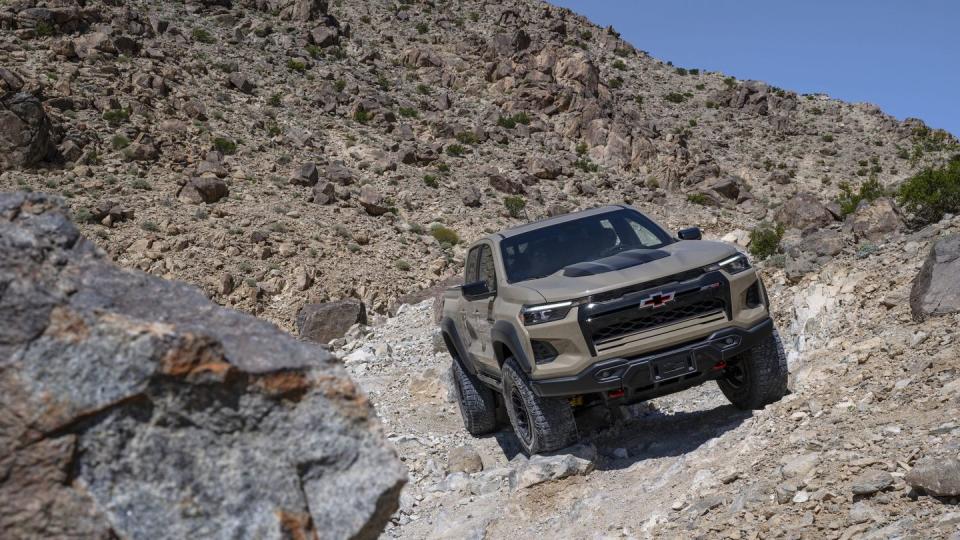
Last year, Americans bought around 2.1 million Ford F-Series, Silverados, Rams, GMC Sierras, and Toyota pickups combined. As with cars, what a person wants from these trucks is often very different from what a person needs in a truck. Do you want to go fast or go far? Haul ass or a trailer? Energy drink or energy efficient? There’s a truck for everything these days. Fortunately, OEMs use the latest technology to give us trucks with overlapping skill sets. Small trucks like the Colorado can now deliver incredible performance off the road and—in Work Truck trim—tow 7700lbs, nearly equal to a Silverado from 20 years ago.
We owe some of this overlap to the original Ford Raptor, which was as comfortable around town as it was galloping across a sandy desert. Ford’s wide-body money-printer was and is an impressive, exciting machine.
I was one of the people excited by the Raptor because I love driving on loose surfaces. Desert racing sits high on my bucket list. As such, the Raptor’s “huck on Sunday, commute on Monday” ethos should jive with me perfectly. But it was just too big. Returning to town from a desert trail felt like maneuvering a ship through the Panama Canal.
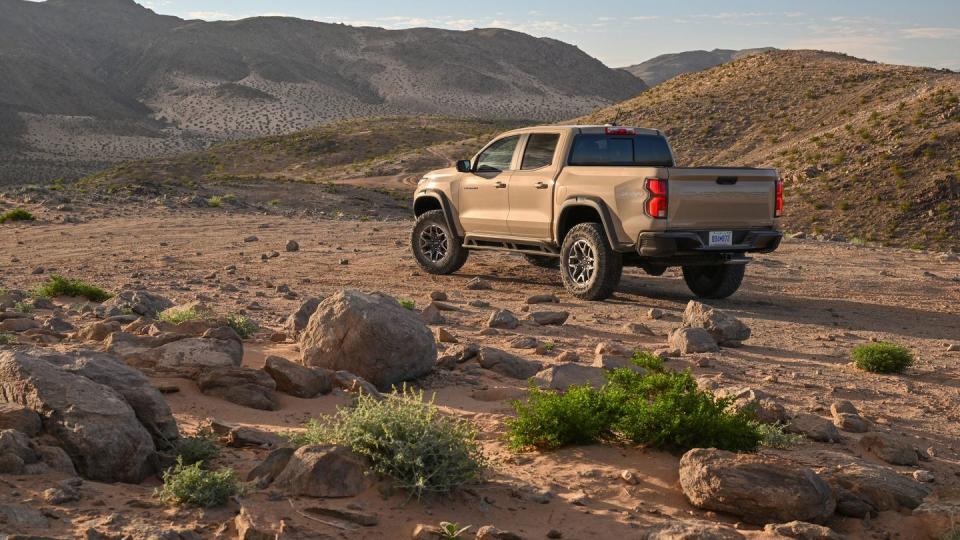
Thankfully, smaller options became available: in 2016, Chevy put the Colorado ZR2 on sale. It was wider and taller than previous Colorados, and listed off-road shocks from Multimatic (the engineering alchemists who built the new Ford GT, suspension for F1 cars, and other small projects like that) among its many features. Ford hatched its Ranger Raptor in 2019 but didn’t sell it here, despite Americans consuming 351 million cans of Monster Energy annually.
Everything changes in 2024. Ford is bringing the Ranger Raptor here and fitting it with Fox’ Live Valve adaptive suspension you find on the Bronco Raptor. The Toyota Tacoma TRD Pro is also all-new for 2024, with a torquey hybrid powertrain and shock absorbers built into the seats. Not one to be left out in the aging cold, Chevy’s Colorado ZR2 is all-new for 2024 and the changes to it are substantial.
Gone is the last Colorado’s 3.6-liter V-6, replaced with a turbocharged inline-four that makes 310 hp and 430 lb-ft of torque, a gain of 2 hp and 155 lb-ft over the V-6, respectively. It’s still 100 ponies shy of the Ranger Raptor’s engine, although the two trucks make the same amount of torque. Though the gear count remains at 8, GM replaced the last Colorado’s 8L45 transmission with the beefier 8L90. According to GM, at WOT, the transmission can upshift eight-hundredths of a second quicker than Porsche’s PDK.
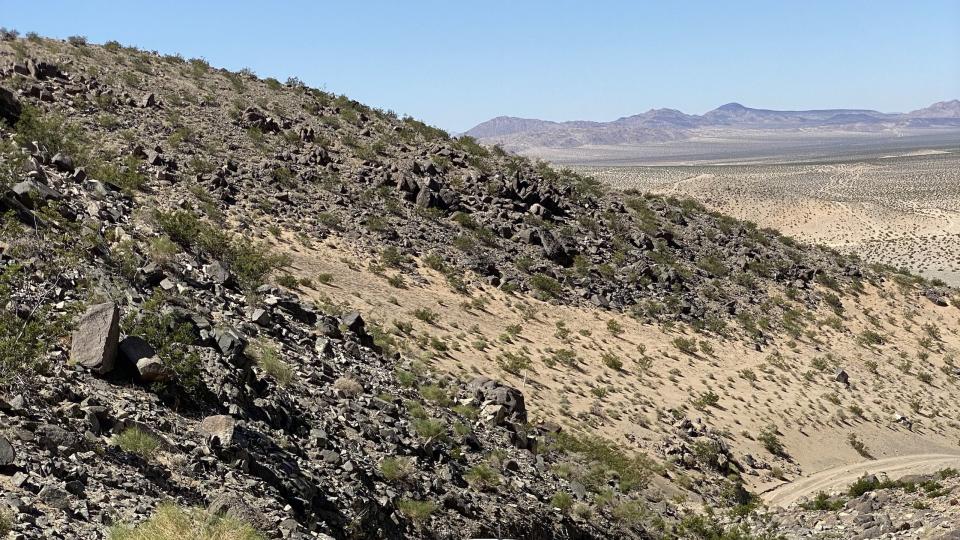
Overall length is unchanged however the truck is four inches [wider?] and the wheelbase is three inches longer, the result of moving the front wheel forward. While a longer wheelbase doesn’t improve maneuverability on tight trails, the Colorado’s wheels were already 10” further apart than a Jeep Wrangler 4-door’s, so I don’t think an additional three will do much harm.
In standard form, the ZR2 shares a lot of parts with the race truck driven by off-road racing legend Chad Hall, who has spent the last six years racing ZR2 across 22,500 miles of desert. The ZR2 you and I can buy has the same frame, cooling system, DSSV dampers, axles, front skid plate, rock sliders, suspension, steering, and brakes you’ll find on Chad’s truck.
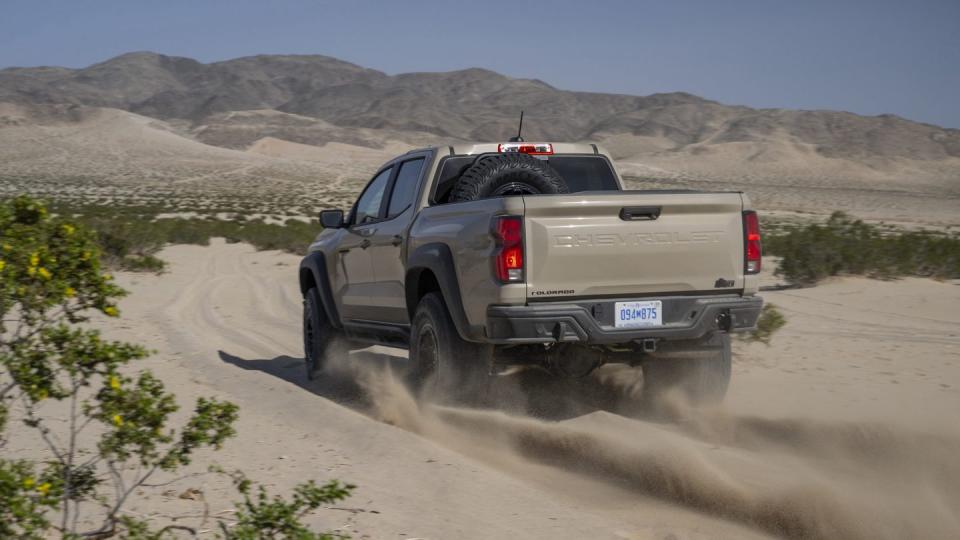
The capabilities of our testers were elevated even further thanks to the Bison package. Developed with American Expedition Vehicles -producers of high—quality parts and turnkey off-road vehicles for nearly 30 years—ticking the Bison box gets you closer-fitting steel bumpers, more underbody protection, rocker bars, wider wheels, 35-inch tires (vs the standard ZR2’s 33-inch rubber) and special shock valving. Just be prepared to shrink your cargo load because the 35-inch spare has to travel in the bed.
There are important geometric changes as well. The rear shocks have been moved from inboard of the leaf springs to right against the tire, giving the Multimatic DSSV suspension better wheel control and improving ground clearance. Those shocks not only have a new address but a new neighbor as well: Multimatic Jounce Control Dampers. The dampers, developed with Chevy, are essentially nitrogen-filled bump stops that help mitigate harsh bottom outs.
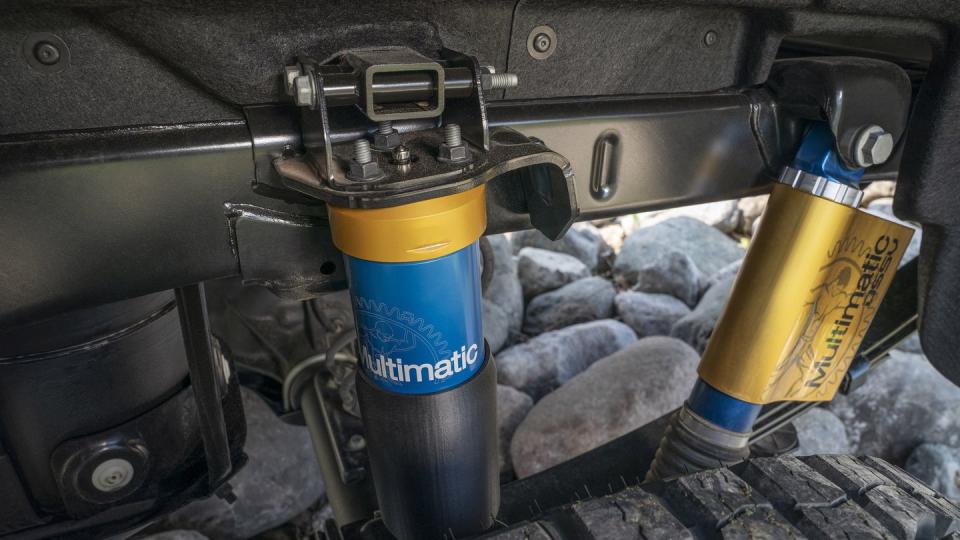
The DSSV dampers themselves are completely different from those on the previous-generation ZR2. They’re a passive system, which Chevy says is simpler and more reliable than a computer controlled damper like the Fox Live Valve. Julio Bombachini—the ZR2’s Vehicle Dynamics Performance Engineer—is one of the people who decides how to make it handle on land and in the air (more below). Over dinner he explained that not only did they test dozens of iterations before getting the ZR2’s shock where they wanted it, they did an additional 50 for the Bison, changing tiny springs, oil weights, even the shape of the passages that oil moves through. (The final ones look like little houses with a chimney, if you were wondering).
We left our Palm Springs hotel and drove East. On Palm Desert's smooth highways the Colorado was a very nice place to be. The front seats had plenty of room for my 5’10” frame and the digital display was bright and clear regardless of the sun’s position. The standard 11-inch multimedia screen reacts quickly and is organized well. Below it, large buttons allow easy manipulation of the climate control, differentials, and hill descent control. The lack of capacitive/haptic controls made me very happy.
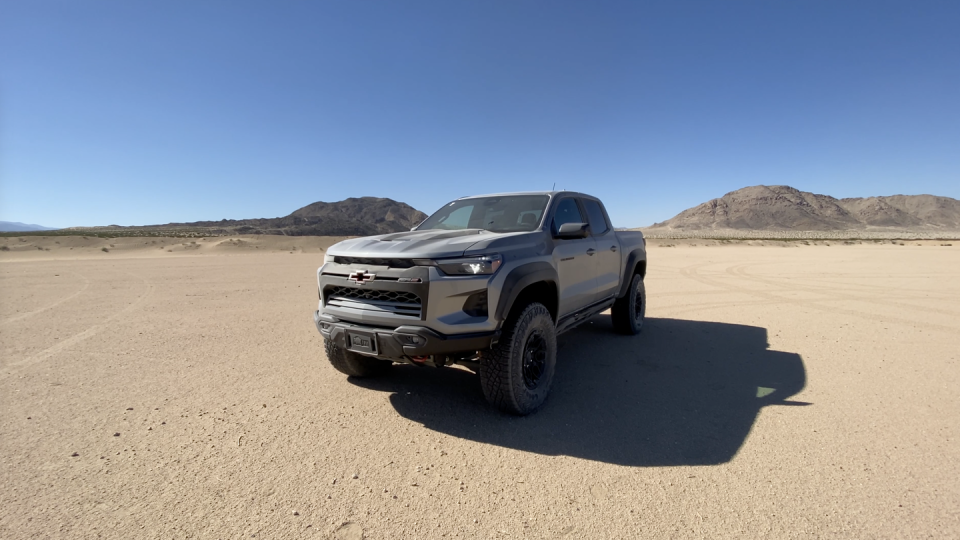
As the ambient temperature climbed to 102F we arrived at our testing facility: the Johnson Valley Off-Highway Vehicle Area, a 53,000-acre playground of undulating sandy river beds and jagged peaks. It’s also the coliseum for the brutal King of Hammers off-road race, where victory requires high speeds and careful rock crawling in equal measure.
On a rocky loop the Colorado demonstrated abilities far beyond what my amateur skills would think possible. Chevy’s staff guided us up rock walls measured in feet, not inches. Some of the climbs were so steep that the rear AEV-made steel bumper would drag on a rock, supporting the truck. These Bison-specific bumpers are not just stronger than the normal ZR2’s, they’re slightly shorter, helping this Colorado achieve class-leading approach and departure angles. The extra-strength skid plates and rock sliders defended the Chevy’s precious bits from the igneous onslaught that the 35-inch tires couldn’t keep away. Pitch and yaw gauges informed me that I was being far too nervous.
The lone frustration was the engine’s response. Even in 4-Low, some rocks required me to build boost for longer than expected before forward motion occurred. When it did finally move, it doled out more throttle than I wanted, making small, precise movements a little tricky. The crawling and sandy transit to the area gave us little time to experience what the DSSV dampers could do. That all changed after lunch.
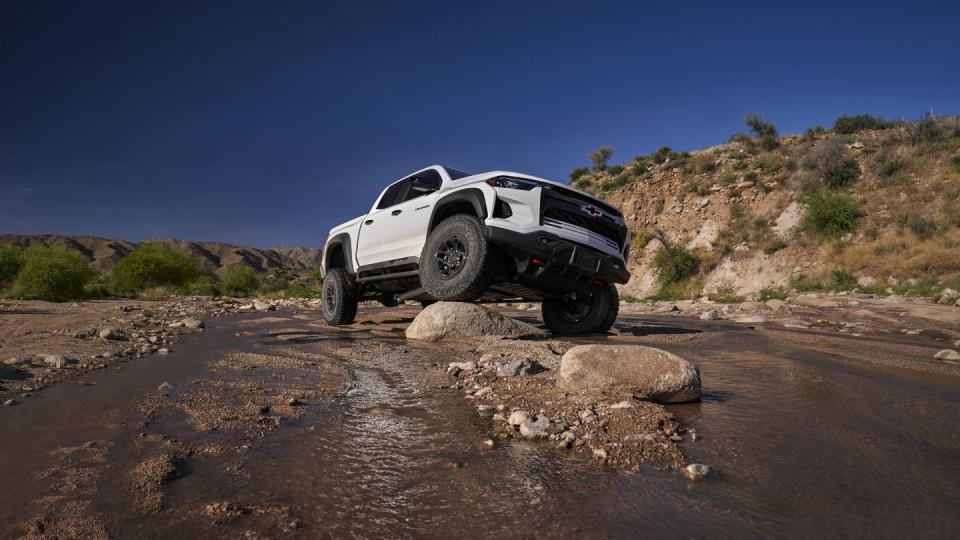
After telling Julio I needed some faster driving for my video review on The Smoking Tire, he agreed to come along to an area he knew. The desert wash had a network of trails featuring bumps in varying wavelengths. We started off at 25 mph, but as we became more confident in my ability to keep Julio alive, built speed. At 35 mph, I started to feel where all the shock tuning had gone. Bumps were soaked up progressively. Small, high-frequency stuff left the cab fairly undisturbed. Then the rollers grew to about 2-feet deep, enough to engage the Jounce Dampers. Each time we reached the trough I would cringe and brace myself, but no harshness came. Again and again, I could feel the truck reach the bottom of its travel, where the force dissipated as if I’d flopped onto a Tempurpedic mattress.
“I think there is a nice jump there.”
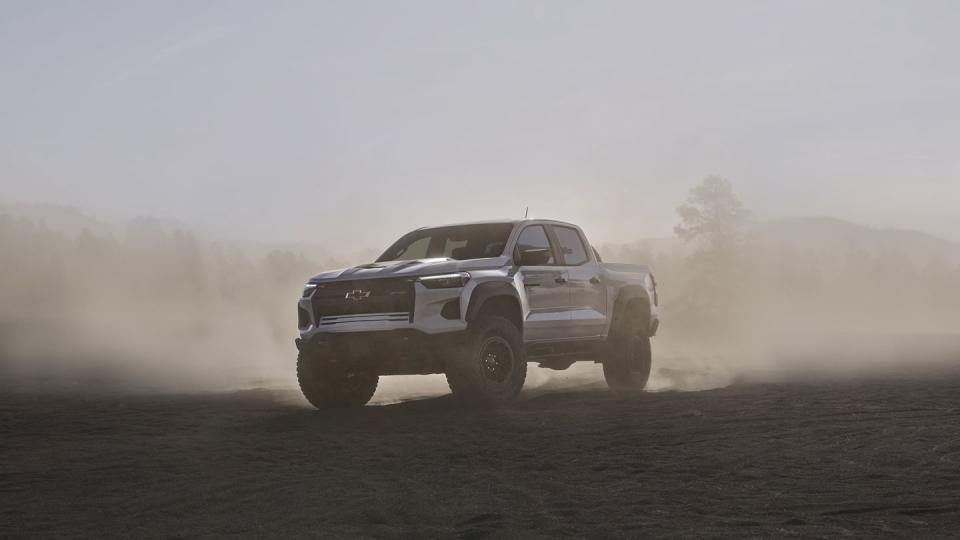
These words entered my right ear as we flew over the sand at 50 mph. Our collective confidence had grown. I was reading the sand, braking for really big dips and then getting back on the gas. Ahead I saw a small rise and nothing beyond it. At 50 mph, all four tires left the ground. This wasn’t a big jump, I’ll admit. Then again, it wasn’t shaped by shovels and PR people; this was a blob of sand in a valley whose trail map would look like an unfinished wiring harness. The jump wasn’t impressive; the wheel control was. We flew, landed, compressed, and rebounded at the perfect rate and the truck felt settled the whole time. A good sports car dispatches with an imperfection the same way. I was floored at how natural and steady it felt.
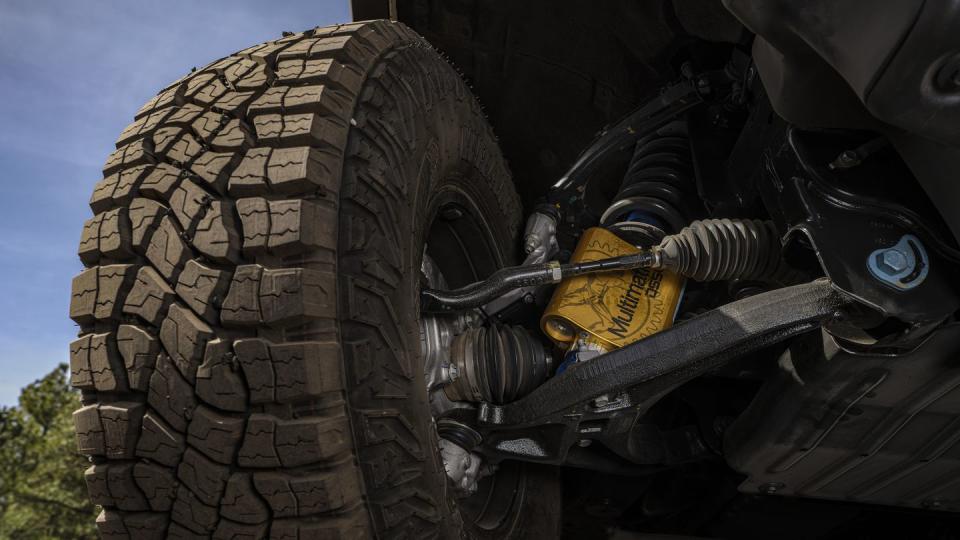
This was a good thing because up ahead were four jumps in a row. We left Earth and returned in quick succession, my body leaving the seat once as well. Yet somehow, as my foolishly-untethered audio recorder relocated to the air and floor, the Colorado kept its poise. A vehicle with less wheel control would have pogo-ed badly, either springing back up before the next takeoff ramp or worse, leaving the ramp with the suspension still fully bottomed out. The ZR2 just leapt and landed, returning to homeostasis as soon as the sand flattened.
In higher-speed corners the steering was accurate and quick, although not that communicative. Drifts are easy to control thanks to aforementioned steering and the power locking rear differential. There’s two levels of “stability off”, one being a sort of drift training wheel that lets you get quite a few degrees of angle before it pulls the throttle, the second putting everything in your hands. It even has launch control, which like the HUMMER, learns the surface and gets a little quicker with each successive launch. And despite making “only” 310 hp, the four-cylinder got me up to speed quick enough.
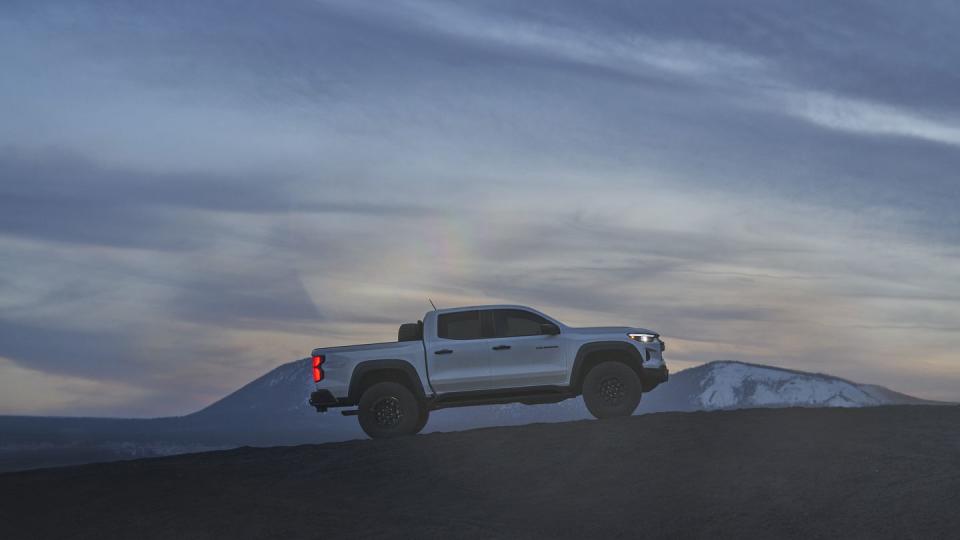
During my five hours in this truck—both as a driver and a passenger—only two additional negatives drew my attention. First, you can’t adjust the angle of the passenger seat bottom. It’s fairly flat and may cause discomfort on long trips. Given the price of this truck that seems like a fairly basic feature to omit. Second, they chose piano black plastic for the center console, citing parts sharing and customer preferences. To me, the world’s greatest dust magnet doesn’t make sense in one of 2024’s best sand slingers. The aftermarket will probably have a replacement by the time you read this.
Admittedly, I haven’t driven the competition. The Ranger’s superior power and adaptive suspension deserve consideration while the Tacoma’s hybrid system offers silent off-roading; something I have thoroughly enjoyed in both the Rivian R1T and Ford F-150 Powerboost.
Nonetheless I left impressed. The Colorado ZR2 Bison has nearly everything I want in an off-road capable vehicle.
Do you need the Bison over the regular ZR2? Only if your life frequently includes the above activities. It moved across an unpredictable landscape with incredible aplomb, reminding me of the best sports cars I’ve driven. But unless you will make frequent use of the hardware, save your money; the regular ZR2 will deliver a great ride and enough towing capacity for a race hauler. Regardless of the spec, I commend Chevy for making a truck that feels as comfortable on the road as off it, especially considering they didn’t name it after a dinosaur.
You Might Also Like

 Yahoo Autos
Yahoo Autos 